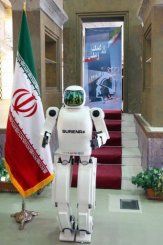
© AP Photo/Callum Bennetts Maverick Photo AgencyIn this image made available by the Maverick Photo Agency on Friday July 2, 2010 show a letter written by famed explorer David Livingstone.
London - The contents of a long-illegible letter written by famed 19th century explorer David Livingstone have finally been deciphered, a British university said Friday, nearly 140 years after he wrote of his despair at ever leaving Africa alive.
Researchers say that the letter - which required state of the art imaging techniques to decipher - helps round out the picture of a man traditionally cast as an intrepid Victorian hero, revealing the self-doubt that tormented the missionary-explorer in one of his darkest hours.
"I am terribly knocked up but this is for your own eye only," Livingstone wrote to close friend Horace Waller in the newly revealed correspondence. "Doubtful if I live to see you again."
Livingstone was a national hero when he set off to find the source of the River Nile in 1866, but by the time he composed his four-page missive he was at the lowest point in his professional life, according to Debbie Harrison, a researcher at Birkbeck University of London.


